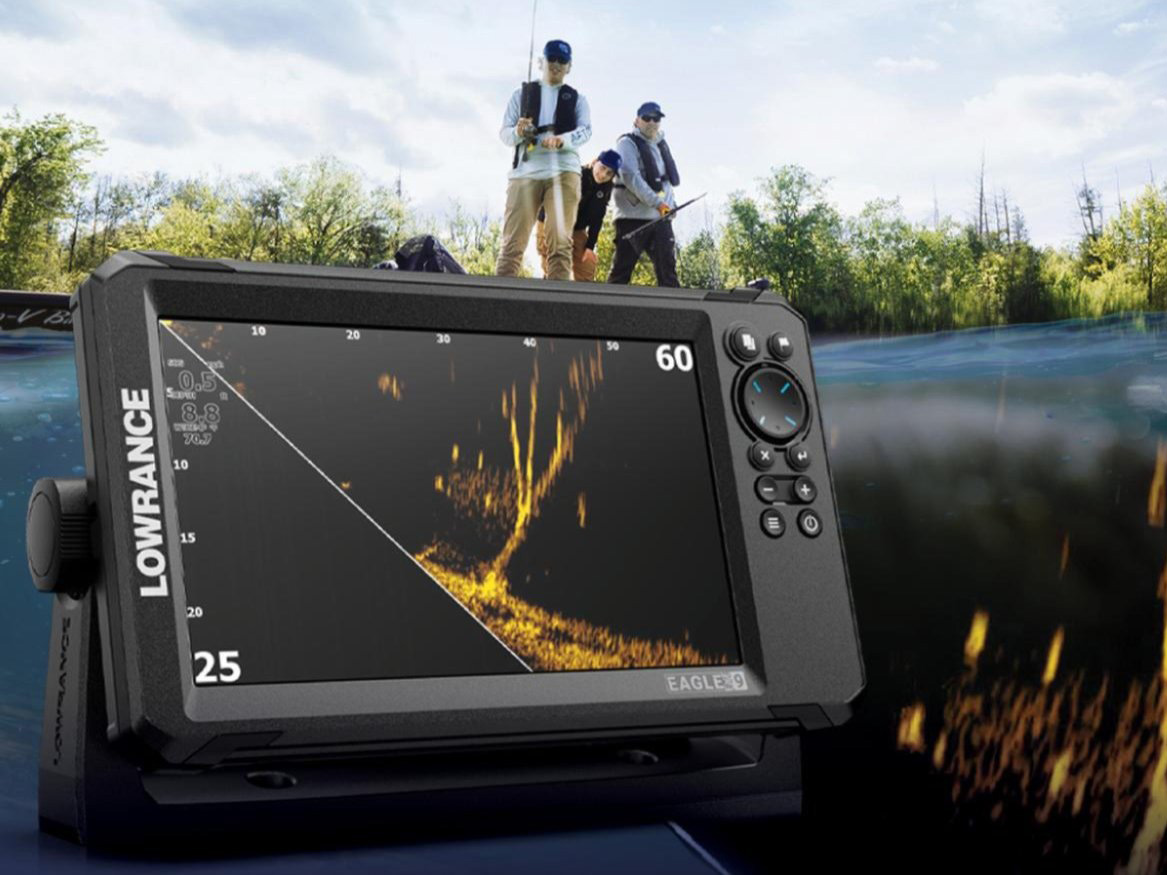News
Is the Eagle Eye the argument killer?
One of the biggest and most annoying thing that has trended on social media and throughout the club scenes is forward facing sonar (FFS). Although this tech has been around for years, it has become a major part of the world of competitive bass fishing from local grassroots to the Elites. There was probably zero reasons to explain that, we all know at t his point.

What is are the biggest arguments against FFS?
There are a couple main areas that people are against the phenomenon of FFS and that is the initial cost and feverishly aggressive calls of it being akin to cheating by “spotlighting” bass. Lets skip over the spotlighting being inherently evil accusations because thats a fight for another day and address the costs problem.
Since Garmin brought this into the market it has been expensive compared to all other forms of electronics on the market. The cost of a high-end graph with high resolution displays, separate box to process the data and specialized transducers it was just expensive. Current models with a 10” graph and Livescope currently runs around $3,200. You can easily go higher than that, and this doesn’t include the costs of additional wiring and batteries anglers have done to ensure the best performance.
The latest from Lowrance for an HDS Pro screen and Active Target 2 box and transducer is roughly the same. Both brands having bigger display units available to increase those prices event more.
Anglers on the Bassmaster Elite were shown by Chris Zaldain to be in the upwards of $50,000 worth of electronics on their rigs which 5-8 displays and 3-5 FFS transducers. This on top of their boats which run in the 6 digit range, and trucks about the same its kind of easy to see how many anglers feel this sport is getting to be about how much money you can throw at it determines how well you will do.
Is affordable FFS enough and does it have a market?
Although the new Eagle Eye from Lowrance is grabbing attention at the moment, its not the first time this was attempted. Garmin had its own similar version of the FFS tech with a boxless unit, single FFS transducer in the past. This ended up not getting the traction that they hoped for and was since discontinued. The biggest issue Garmin has was it did not have a lower end model to put it with, so it was paired into an expensive unit.
The other issue with a direct to unit FFS transducer is the limitations on beam processing. Without the box to process and stitch numerous beams together, you are limited to one beam reducing the mouth of visibility. Put the high cost and limited visibility into the same situation, anglers might as well spend just a little more and get the full package. And thats what they did.
The Lowrance Eagle Eye appeal
Lowrance released their new more affordable line of sonar units earlier this year bringing a competitive line back into their offering. With the success of the high end HDS Pro and mid-tier Elite FS series, the only part of the market that was left was everyone else. The introduction of the series gave anglers a choice of slightly less feature rich models for a price that is a great compromise. No touch screens and super high resolutions but still a quality system to get more anglers into the Lowrance family.
In comes iCast 2024 and the release of the Eagle Eye. An addition to that lower tier system with a single transducer and Active Target 2 for under $1,000! Of course it was immediate buzz and then the “it didn’t work for Garmin” comments started up. Yes its limited, only 1 beam at a time verse the 3 stitched beams in the full Active Target 2 system.
However, this will get the angler a forward and down live view of whats going on, just not with as much coverage as the full system. The angler also has a simple to install setup with the one transducer to handle live, down scan as well as 2d sonar. The unit also has detailed mapping with C-Map embedded inland charts and more.
The only feature this unit doesn’t have is Sidescan. The only compromise that needed to be made for the single transducer setup. With the affordability of the other Lowrance Eagle products, you could compliment this with a sister device and have 2 Eagle units cheaper than one FFS setup that cover the entire gamut.
Is the cost point argument dead?
Only time will tell if this satisfied the masses of anglers that rail agains the rising costs of competitive bass fishing. Although these seem to be great for the kayak angler, which is trying to keep his electronics costs at least somewhat relative to the cost of the boat. With anglers putting $10,000 of gear on their $3,000 kayak its also causing a ruckus in the community about feelings of unfair advantages, and the sport heading too far down the Elite pro direction and further away from the traditional kayak fishing roots. The kayak communities are torn on these as such as they are on motors.

Comments
Be the first to comment on this article!